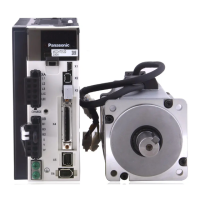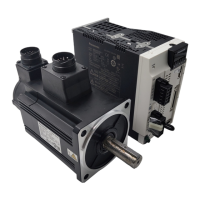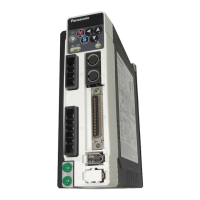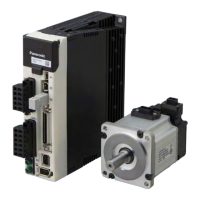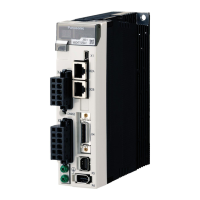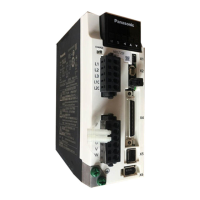- App. 38 -
PrNo. Parameter
Value
Unit Function
•
This driver provides 2(two) sets (1st. and 2nd.) of
gain and time constant for position loop, velocity
loop, velocity detection filter and torque command
filter.
•
The functions and meanings of these 2nd gains or time
constants are the same as those of the 1st ones
mentioned in the previous page.
•
For switching between the 1st and 2nd gains or
constants, see Adjustment.
* If Pr20 (inertia ratio) has been set correctly, the unit of
the values of Pr11 and Pr19 is Hz.
•
You can set-up the frequency of the resonance suppression notch filter.
•
You can set-up the resonance frequency of the machine system which
you can obtain by the frequency characteristics analysis program
contained in PANATERM.
•
This notch filter function will be disabled by setting this
parameter to 1500.
•
You can set-up the width (five options) of the resonance suppression notch filter in
5 steps. The higher the setting is, the wider the width you can obtain.
•
In normal cases, the default value should be used.
•
You can set-up the time constant (eight options) of the primary delay filter
inserted in the Distulbance torque observer.
18
19
1A
1B
1C
1D
1E
1F
2nd position
loop gain
2nd velocity
loop gain
2nd velocity
loop integration
time constant
2nd speed
detection filter
2nd torque filter
time constant
Notch
frequency
Notch width
selection
Disturbance
torque
observer
10 ~
2000
[50]
1 ~
3500
1 ~
1000
[50]
0 ~ 5
[4]
0 ~
2500
100 ~
500
[1500]
0 ~ 4
[2]
0 ~ 8
[8]
1/s
Hz
*
ms
Å[
0.01ms
Hz
Details of Parameters
0Å`7
The smaller the setting is, the larger
the suppression you can expect. *1
8
Å@Å@
Value of Pr1F
*1 Note that the running noise of the motor becomes larger, with a smaller value of Pr1F(better suppres-
sion of the Disturbance torque). It is recommended that you start from the smaller value of Pr1F to
see the actual response and increase the value.
•
For the calculation of Disturbance torque in the observer, the inertia ratio (Pr20) is necessary. If the
load inertia is known, calculate the inertia ratio and set the value of Pr20 to the inertia ratio calcu-
lated. If the load inertia is unknown, perform the auto gain tuning that automatically enters the value
of Pr20.
<Note>
• For the default values of Pr19, Pr1C and Pr20, see page 44.
Disturbance torque
observer disabled.

